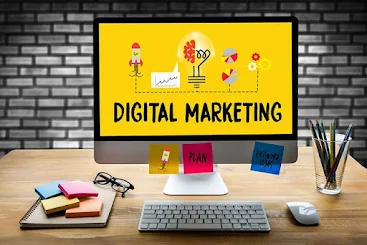Introduction
Digital marketing is an ever-evolving landscape, and staying abreast of the latest trends is crucial for businesses aiming to stay competitive. These trends revolutionize the way brands connect with their audience, optimize strategies, and drive growth.
Trend 1: AI-Driven Marketing
Artificial Intelligence (AI) is reshaping digital marketing by enabling personalized user experiences and predictive analytics. Its integration in chatbots, data analysis, and customer segmentation streamlines processes, enhancing efficiency and engagement.
Impact:
- Enhanced Customer Experience
- Data-Driven Decision Making
- Improved Campaign Performance
Trend 2: Video Marketing Dominance
Video content continues to reign supreme. Its immersive nature captivates audiences, fostering stronger connections between brands and consumers. Short-form videos on platforms like TikTok and Instagram Reels are gaining momentum.
Impact:
- Increased Engagement
- Higher Conversion Rates
- Brand Storytelling Advancements
Trend 3: Voice Search Optimization
The prevalence of voice-activated devices has elevated the importance of optimizing content for voice search. Businesses are adapting their SEO strategies to cater to conversational queries, altering keyword usage and content structure.
Impact:
- Altered Keyword Strategies
- Focus on Long-Tail Keywords
- Enhanced Local SEO Efforts
Trend 4: Influencer Marketing Evolution
Influencer marketing has matured, shifting towards micro and nano influencers with highly engaged niche audiences. Authenticity and genuine connections are becoming paramount over sheer follower counts.
Impact:
- Niche Audience Targeting
- Authentic Brand Advocacy
- Cost-Effective Partnerships
Trend 5: Social Commerce Surge
Social media platforms are evolving into shopping hubs with integrated purchase functionalities. Brands are leveraging these platforms to streamline the purchasing process and create seamless shopping experiences.
Impact:
- Direct Sales Opportunities
- Enhanced Customer Engagement
- Conversion Rate Optimization
Trend 6: Augmented Reality (AR) Integration
AR is reshaping consumer experiences by enabling virtual try-ons, interactive product demos, and immersive brand experiences. Its adoption across industries is fostering a new era of experiential marketing.
Impact:
- Enhanced Engagement and Interaction
- Improved Customer Decision Making
- Innovation in Product Demonstrations
Trend 7: Sustainability-Driven Marketing
Consumers are increasingly conscious of sustainability. Brands incorporating eco-friendly practices into their marketing strategies are gaining favorability and loyalty among environmentally conscious consumers.
Impact:
- Brand Reputation Enhancement
- Increased Consumer Trust
- Positive Social Impact
Trend 8: Personalization at Scale
Hyper-personalization strategies are leveraging data to craft tailored experiences for individual consumers. Dynamic content, AI-driven recommendations, and behavioral targeting are integral components.
Impact:
- Heightened Customer Satisfaction
- Improved Customer Retention
- Increased Conversion Rates
Trend 9: Data Privacy Focus
With increasing concerns about data privacy, marketers are prioritizing transparency and compliance with stringent regulations. Building trust through transparent data handling practices is paramount.
Impact:
- Enhanced Trust and Credibility
- Compliance with Regulations
- Improved Brand Image
Trend 10: Interactive Content Engagement
Interactive content, such as quizzes, polls, and interactive videos, is captivating audiences and driving higher engagement rates. Brands are leveraging these formats to foster meaningful interactions.
Impact:
- Extended User Engagement
- Enhanced Brand Recall
- Valuable Data Collection
Conclusion
The digital marketing landscape is dynamic, and staying updated with these trends is pivotal for businesses. Embracing these innovations empowers brands to connect meaningfully with their audience, drive growth, and stay ahead in the competitive landscape.
FAQs about Trends
1. How can small businesses leverage these trends?
Small businesses can start by focusing on one or two trends that align with their target audience. For instance, utilizing social commerce or engaging in micro-influencer collaborations can yield significant results without extensive resources.
2. Are these trends applicable across all industries?
While some trends have universal applicability, their impact might vary based on industry specifics. For example, AR integration might profoundly impact the fashion industry compared to manufacturing.
3. How often should businesses adapt to new trends?
Regular monitoring and adaptation are key. However, blindly following every trend might not be effective. Businesses should analyze each trend's relevance to their goals and audience before integrating them into their strategies.
4. Do these trends have a long-term impact?
While trends evolve, their core principles often endure. For instance, personalization and data privacy are likely to remain crucial aspects of digital marketing strategies in the foreseeable future.
5. Can businesses combine multiple trends for a comprehensive strategy?
Absolutely! Combining trends can create synergistic effects, amplifying the impact on audience engagement and overall marketing success.










No comments:
Post a Comment